30 Scary Ocean Facts More Terrifying Than Anything in Outer Space
Alien life may or may not exist—but the fangtooth definitely does.
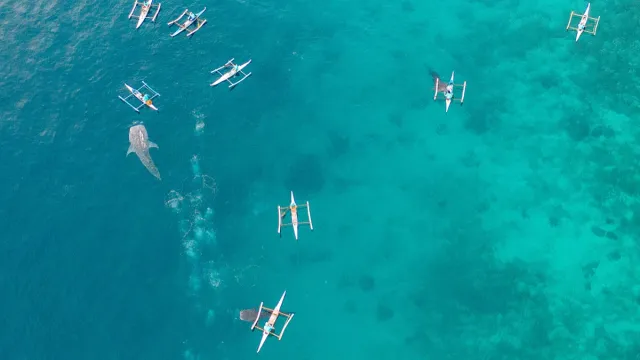
Space, the final frontier—or so they say. "They" clearly haven't turned their gaze to the depths of our own planet. Yes, space is frightening in an overwhelmingly existential way. But nothing about space—not the potential for alien invasions, not the inevitability of solar implosion, not the eons of never-ending nothingness—is as downright petrifying as these scary ocean facts.
That's right, a body of water that over 94 million Americans live within miles of is the most terrifying thing in existence. For starters, we've barely explored any of it. And the parts we actually have explored are full of murderous sea creatures diabolical natural forces, and otherworldly-seeming black holes.
Yeah—black holes aren't solely relegated to space. That's not all, though; in fact, this trove of scary facts about the ocean barely scratches the surface of why the ocean is the world's longest-running horror show.
READ THIS NEXT: 55 Fascinating World Facts You Need to Know.
30 of the Scariest Things About the Ocean
If you want your knuckles to turn as white as the crest of a tsunami wave, check out the terrifying trivia below. Just don't say we didn't warn you.
1. It's full of black holes.
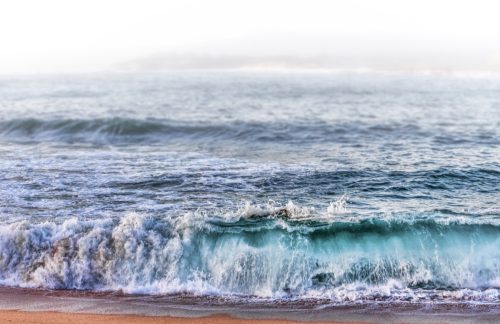
Think space is home to all the black holes? Think again. The ocean is teeming with eddies similar to the black holes in space, meaning nothing in their path can escape. Scarier yet, the black holes in the ocean are massive, often measuring up to 93 miles in diameter. For context, that's larger than the entirety of greater Los Angeles.
2. We're constantly discovering terrifying new creatures.

If you think the beasts of the jungle are horrifying, you haven't seen anything yet. Deep sea creatures like the fangtooth (!), goblin shark, and frilled shark are far more terrifying than anything you'd discover on land. And we're always finding new monsters in the ocean: in fact, the largest colossal squid ever observed was found just over a decade ago, in 2012. Imagine what we'll discover in the next!
3. The ocean is home base for hurricanes.

While hurricanes may cause the most devastation when they make landfall, they form over the ocean. And when these ocean-based storms touch down, they touch down hard. In 2017 alone, 103 Americans died as a result of injuries sustained in hurricanes Harvey, Irma, Jose, and Maria. Solar flares—storms from space—harmlessly bounce off our ozone layer.
4. Jellyfish are deadly.

You probably don't want to encounter a shark during your swim, but those pesky jellyfish—of which there are millions in the ocean—may actually be a greater threat to your life. Thanks to their venom and relative lack of detectability underwater, jellyfish actually have a much higher body count than sharks.
5. The ocean floor is littered with shipwrecks.

While it's nice to imagine that there's nothing but placid water below you when you're taking a dip in the ocean, the reality is much more terrifying. In fact, the United Nations Educational, Scientific and Cultural Organization estimates that the deep ocean floor is home to a staggering three million wrecked vessels. Space (designated as any elevation above the Karman Line) has claimed a comparatively few four vessels.
READ THIS NEXT: 32 Greatest Scientific Discoveries of Our Lifetime.
6. And dead bodies.

Of course, all those wrecked ships didn't man themselves. In many cases, the bodies of crew members and passengers on shipwrecked vessels stay in the ocean for shockingly long periods of time. In 2014, researchers diving in an underwater cave off the coast of Mexico found the remains of a girl estimated to be at least 12,000 years old. In other words, the ocean is a cemetery. Space, not so much.
7. It's a lightning magnet.

While the ocean may not get struck by lightning as often as land, when it does, the results can be disastrous. Because water is a conductive substance, lightning spreads rapidly and can electrocute any people, boats, or sea life that are in its path.
8. It's a bacterial hotbed.

Just because the tide is coming in and receding doesn't mean that the ocean water you're taking a dip in is fresh, per se. The bad news for beach-goers is that parts of the ocean are teeming with bacteria—including that of the flesh-eating variety. A few years back, a woman claimed to develop necrotizing fasciitis after dipping her feet into the ocean off Myrtle Beach. A prokaryotic cell—the type of thing that, eventually, spawns disease—has never been discovered off-Earth.
9. It's filled with garbage.

The ocean may look beautiful from that pristine stretch of beachfront you're sipping your margarita on, but make no mistake: it's a huge trash can. In fact, the Great Pacific Garbage Patch, which lives between California and Hawaii, has expanded to 600,000 square miles—more than twice the size of Texas.
10. If you crash in the ocean, you're a goner.

While there's actually a good chance of surviving a minor plane crash, if you find yourself crashing into the ocean, you're out of luck. Not only is the combination of a massive plane crash plus a potential drowning situation pretty hard to come back from, but in many cases, the wreckage from planes crashing into the ocean are never found.
11. The Bermuda Triangle is the site of several unexplained disappearances.
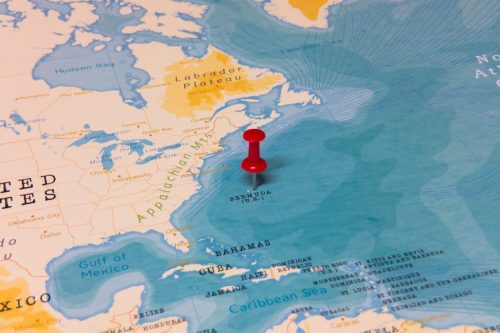
This 500,000-square-mile area of the Atlantic Ocean is steeped in terrifying mystery and folklore. As the legend goes, once a ship or vessel enters the Triangle, anyone on board will be lucky if they ever see the light of day again. According to History.com, the most chilling case of these mysterious disappearances occurred when the USS Cyclops, "a 542-foot-long Navy cargo ship with over 300 men and 10,000 tons of manganese ore onboard," sank somewhere in the Triangle. The captain didn't even find the time to send out an SOS signal. After exactly 100 years of endless searching, the cargo ship is still nowhere to be found. We've kept track of every ship that's left orbit.
12. Much of the ocean remains unexplored.
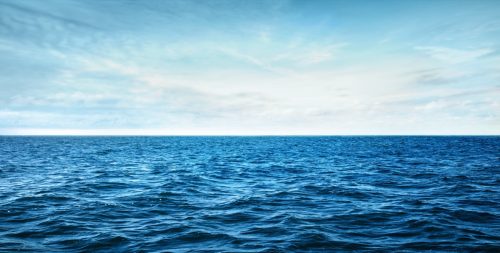
Though scientists have taken the time to chart out 100 percent of the moon and Mars, there's a lot left to accomplish when it comes to deep sea mapping. So far, scientists have only managed to explore a whopping 20 percent of the ocean, according to the National Oceanic and Atmospheric Administration (NOAA).
13. Ten people drown per day in the United States.

Yep, that's right—an estimated 4,000 deaths by drowning occur each year—rounding to about 11 per day just in the United States, according to the Centers for Disease Control. In fact, drowning is the number one cause of death in children aged one to four. These statistics far outpace the number of deaths in space, which, in over 50 years, have amounted to 21.
14. Some sharks are out for blood.

There's a reason why the Jaws movies are so terrifying—because shark attacks are actually way more common than you think. Just in 2022, the world saw 57 unprovoked and 32 provoked shark attacks, according to the Florida Museum of Natural History. (Alien attacks: 0.)
15. And the ocean houses even more terrifying predators.

If you've ever taken the time to compare deep sea creatures, you'd know that sharks aren't the only danger swimming beneath the surface. The NOAA reports that the Australian Box Jellyfish is the most venomous marine animal in the ocean. These potential threats include pufferfish, which contain enough toxins to kill 30 adult humans (and to which there is no known antidote), and barracuda, which can reach speeds up to 25 miles per hour when on the attack. (Alien attacks: still 0.)
READ THIS NEXT: 32 Rare Animals So Unusual, You Might Not Know They Even Exist.
16. Rip currents can drag you out to sea.
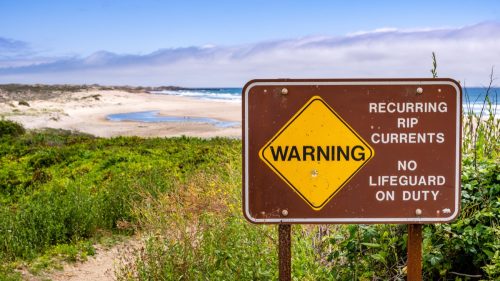
According to the NOAA, rip currents—"powerful, channeled currents of water flowing away from shore"—account for more than 80 percent of rescue missions on beaches. These sometimes deadly currents can come out of nowhere.
17. A tsunami could bring about the end of the world.

Between 1998 and 2017, these natural sea disasters caused more than 250,000 deaths globally. They can be caused by earthquakes, volcanic eruptions, landslides, or basically any large-scale disturbance in the sea, according to the World Health Organization. While there are a few ways to guard against these disasters, the multiple-foot-high walls of water are almost impossible to reckon with. What's more, it's been theorized that a tsunami generated by an asteroid hitting Earth would be "disastrous" for the planet.
18. The ocean's depths will literally crush you to death.
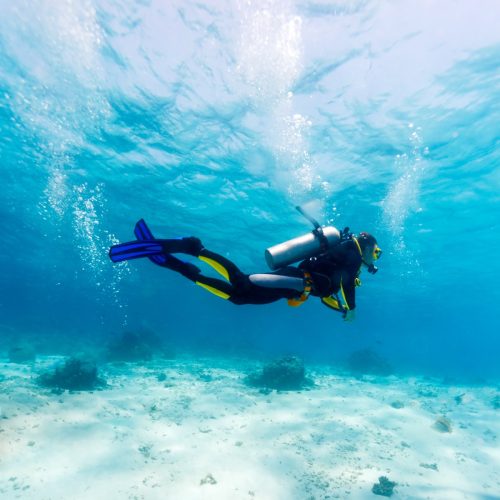
The average ocean depth is around 12,100 feet. But most divers are instructed to only dive about 130 feet deep. Any further and you run the risk of having your lungs collapse as a result of increased hydrostatic pressure.
19. The folk legends about sea creatures are terrifying… and sometimes true.
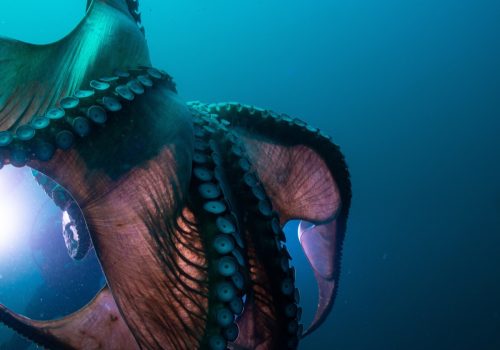
Though the Giant Squid used to be a folktale used to scare men out at sea, it turned out that the legend was based in truth. These sea legends can extend up to 59 feet in length and are known to have cannibalistic tendencies.
20. The ocean is designed to lure you in.

To make matters worse, we weak humans are biologically attracted to its shiny depths.
21. Corals are living, breathing creatures.
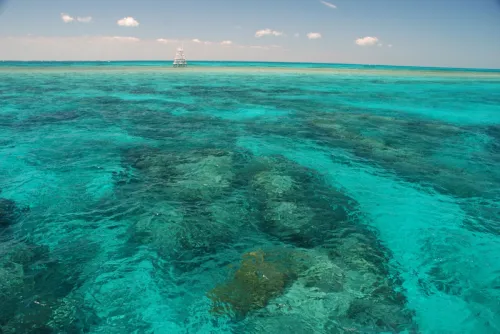
Corals—yes, those things in the ocean that look and act like rocks—are actually classified as marine invertebrates made up of thousands of tiny creatures called polyps.
22. It can make you seriously ill.

The ocean is so littered with bacteria that scientists still aren't sure how many illnesses can be picked up from it, but they have confirmed that you can catch hepatitis, Legionnaires' disease, MRSA, gastroenteritis, and pink eye. And it's our fault: Most of the bacteria present is the result of humans using the ocean like a trash can.
23. You can still get sunburn in the ocean.

Don't think for a second that the ocean water is going to stave off the sun's rays. On the contrary, the World Health Organization warns that water reflects 10 percent of the sun's UV rays, while sand reflects an additional 15 percent.
24. Sea water levels are rising at an alarming rate.

You can thank global warming for this particular terror, which is caused by melting ice and thermal expansion. While this may not immediately affect humans, thousands of coastal cities are already preparing for a shifting shoreline.
25. Scientists have no idea what's causing "The Bloop."

In 1997, the NOAA discovered a screeching bloop—deemed "The Bloop"—coming from the depths of the ocean. To this day, no one knows for certain what it comes from, though scientists have speculated it could be due to glacial movement. For the record, the SETI Institute—the organization in charge of listening to outer space, in the hopes of hearing something, anything—has still turned up nothing.
READ THIS NEXT: 67 Weird Facts So Strange, You Won't Believe They're True.
26. We have no idea how fishing impacts the world.

According to a report from the National Oceanography Centre, there's not enough data out there to know how fishing—deep-sea fishing, in particular—impacts the global ecosystem.
27. The Kraken used skeletons as art.

You know the Kraken—the legendary, bus-sized squid that indiscriminately devoured ships and creatures as if they were krill? According to the Geology Society of America, the Kraken of yore (yes, they were actual giant squids) used to murder dinosaurs and arrange the skeletons in artistic patterns.
28. We have no idea how to explore the ocean.

Once, in 2012, James Cameron, of Titanic fame, reached the nadir of the ocean, the bottom of the Mariana Trench, becoming only the second person in history to pull off such a feat. But the dive was unsustainable. He was forced to surface after just a few hours of study. And as we've seen with the Titan submersible tragedy, these attempts can only be made under extreme risk. Meanwhile, humanity has been able to spend far longer periods of time in space—and a lot more than two people have pulled it off.
29. Sunlight can't penetrate it.
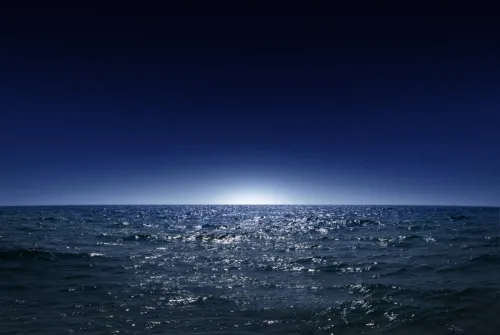
At around 3,000 feet, you'll no longer see any sunlight. In some parts of the ocean, that's less than a tenth of the way to the bottom. While deep sea creatures have adapted to these habitats, humans simply don't possess the same capabilities.
30. The Great Blue Hole of Belize attracts scuba divers.

Though it sounds like a trap, this underwater sinkhole is a major tourist attraction and bucket list item for scuba divers worldwide. The hole measures over 300 meters across and 125 meters deep and accounts for the world's largest natural formation of its kind.
Wrapping Up
That's it for our list of scary facts about the ocean, but be sure to check back in with us soon for more trivia that will impress your friends! You can also sign up for our newsletter to enjoy health, entertainment, and travel content.
- Source: https://www.fema.gov/sites/default/files/2020-08/fema_hurricane-season-after-action-report_2017.pdf
- Source: https://unesdoc.unesco.org/ark:/48223/pf0000152883
- Source: https://oceantoday.noaa.gov/lightning/
- Source: https://oceanservice.noaa.gov/facts/exploration.html
- Source: https://www.cdc.gov/drowning/facts/index.html
- Source: https://oceanservice.noaa.gov/hazards/beach-dangers/
- Source: https://www.who.int/health-topics/tsunamis#tab=tab_1
- Source: https://oceanservice.noaa.gov/facts/oceandepth.html
- Source: https://psycnet.apa.org/record/2014-01557-001
- Source: https://www.cdc.gov/mmwr/preview/mmwrhtml/mm6301a2.htm?s_cid=mm6301a2_w
- Source: https://www.who.int/news-room/questions-and-answers/item/radiation-ultraviolet-(uv)
- Source: https://oceanservice.noaa.gov/facts/sealevel.html
- Source: https://oceanservice.noaa.gov/facts/bloop.html
- Source: https://www.savethehighseas.org/wp-content/uploads/2011/09/Lisbon_report_final_web.pdf
- Source: https://www.sciencedaily.com/releases/2011/10/111010075530.htm
- Source: https://oceanservice.noaa.gov/facts/light_travel.html#:~:





















